Boss Battles
The highlight for me during this game were the infrequent but epic boss battles. Throughout the journey you'll meet a variety of boss characters: a huge ogre like Cyclops; a flying dragon creature called a Pao-Kai; as well as an undead, grizly looking zombie-like necromancer character. Defeating these enemies usually requires application of the mind rather than brute force, since usually there will be something to drop on the boss' head or some other clever way of bringing the beast down.Your tab button will be used a fair bit in this game too. Within this sub-menu you have access to all of your weapons and items. The choices of weapon are fairly broad - a long or short sword can be equipped with a shield for a balanced attack and defence; there is a bow for ranged attacks; the staff, which is best employed when fighting groups of beasties; and the daggers which are designed for the stealthy approach. The variety of weapons supplements the many ways you can take on situations.
On top of the weapons you will pick up items to aid you along the way. There are the usual health and mana potions to replenish your bodily and magical functions. You can also grab some food to munch on, as well as picking up garments and pieces of jewelery which will add extra mana points and other bonuses. It's a system that doesn't compare in scope with a real RPG but provides an incentive to try and uncover secret areas within the game. Certain weapons and items will significantly improve your chances of defeating the enemy.
The other area of the sub-menu that will be of importance to you is the level-up system. This works as three trees which contain 'fighting skills', 'magic skills' and 'other skills'. As you progress through the game you are awarded points which you can spend on upgrading your abilities. I personally concentrated on making my guy as powerful as possible and pumped all my accumulated points into improving my strength and sword skills. You can easily concentrate your points on improving your stealth skills, or, if you're so inclined, magical skills to create a character that is just right for you.
Some of the magic is pretty cool, if a little gimmicky. The ice spell I particularly enjoyed - fire it at an enemy and turn them into a David Blaine ice block. Another magical ability is the telekinesis, and building up this skill ultimately allows you to move objects within the game. Chucking huge barrels at your enemies is a really cool, if 'seen-it-before', use of the Source physics engine.
The environments vary from medieval styled town to a desolated temple dedicated to spiders through to dank, underground sewers. The game involves a lot of vertical action, fighting enemies who are both above and below you. To make this possible you have access to the 'Rope Bow', which can fire an arrow into any wooden surface and drop a rope which you can climb up. You can set up a series of these ropes and jump between them to get from area to area. It's an ingenious way of giving the game an extra dimension The variance is handled brilliantly by the Source engine and, as you can see in the pictures, HDR lighting is used aplenty. For more about the graphics turn over.
Criticisms
So all is brilliant in Dark Messiah? Well, no, actually. The game suffers from a few problems which halt it from joining Half Life 2 and Oblivion in the Hall of Fame. First up, each of the levels is fairly long - which is a good thing, however, each level contains a theme and subsequently the enemies you face within each level are repetitive. Playing through the level where the Orcs are guarding the temple you end up killing Orc after Orc after Orc. They all look the same, they all act fairly similarly and you end up just wishing you could kill something different.That isn't the only problem with the enemies: a lot of the time the easiest way to beat them is by kicking them over a ledge or into flames. This, initially, is great fun but soon becomes a bit tiresome. When you have access to the flame magical ability it becomes a case of searching for oil jars, smashing them on the ground, setting them alight and then waiting for enemies to run near you so you can kick them into the flame. There is only so many times I want to watch a guy writhe around burning to death…That's not to say I can't go about chopping peoples heads off, it's just so much easier kicking them into the flames.
These criticisms all pale in significance to the worst aspect of the game though. The 'it's-so-bad-it's-funny' Battlefield 2 multiplayer clone. I played this game for several hours and have to say that I haven't played something, commercially released, that was this bad. The medieval weapons don't make for good Capture the Flag dynamics, and by choosing to be a swordsman you are severely limited in your ability to fight anyone with magical abilities. The multiplayer game was made by a completely different development studio from the single player iteration, and my advice would be to avoid the gaming abortion so as not to spoil any memory you have of the single player game.
Thankfully the single player game is strong enough to warrant your hard earned cash. Dark Messiah will probably be remembered as the game that missed an opportunity; it could have been absolutely brilliant but ended up a middling affair where a little extra bit of work polish up the annoyances would have meant we'd be heralding it as the greatest thing since sliced bread. It doesn't help that the game has its fair share of bugs, though a patch was released recently through Steam to address some of the issues.
Read on to get our views on the enhanced Source engine used for Dark Messiah.

MSI MPG Velox 100R Chassis Review
October 14 2021 | 15:04



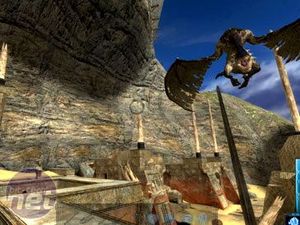



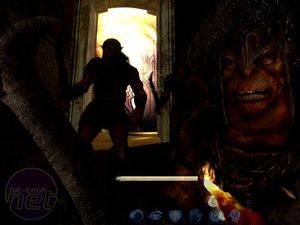
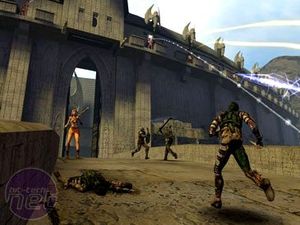
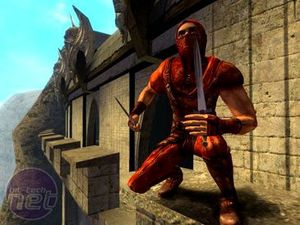
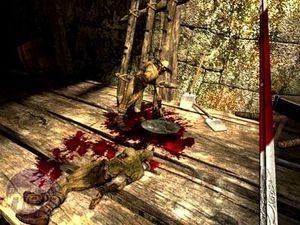

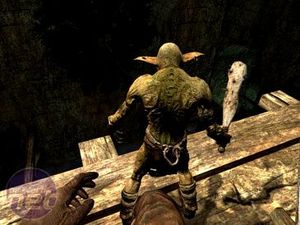
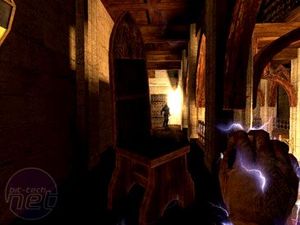








Want to comment? Please log in.